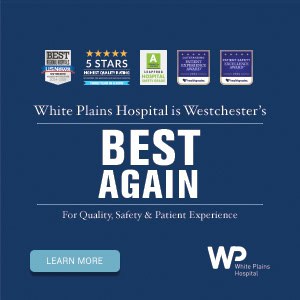Gov. Andrew Cuomo on Monday, Nov. 30, announced New York’s plan for combating COVID-19 this winter. Over the past week, Cuomo and the state’s COVID Task Force has worked in consultation with global public health experts, local governments and other stakeholders to ensure that the plan builds off the
lessons learned during the past nine months to anticipate and prepare for an expected increase in COVID cases and hospitalizations over the holiday season.
Specifically, the winter plan consists of five targeted strategies focused on mitigating the spread of the virus and bolstering New York State hospital preparedness.
“While the holiday season often brings joy to many, the increase in social activity and mobility will also bring an increase of viral transmission. We understand
the cause and effect, and the effect is dramatic,” Cuomo said. We must adapt to this reality and have a plan in place that specifically addresses the challenges
that come with it. We’ve been through the worst, and while we’re not done yet, we are moving forward with the lessons we learned in the spring to come
through this together.
• Strategy 1
Continue and strengthen New York’s targeted microcluster strategy while managing hospital capacity to enhance and equalize care.
Under New York’s Winter COVID-19 Plan, this strategy, which was first launched in mid-October, will be strengthened through the utilization of additional, hospital-related metrics to provide a clearer picture of where a particular zone stands in the fight against COVID and how each neighborhood, municipality and other geographic area contributes to daily hospital admissions due to COVID.
Under this improved strategy, the New York State Department of Health will include factors such as regional hospital bed capacity, ICU capacity, staffing ratios and daily hospital admissions as part of the analysis and metrics used to determine which geographic areas qualify as micro-cluster zones. In addition to the three existing microcluster zone levels (Yellow Precautionary, Orange Warning and Red), New York will also add a new ‘Emergency Stop’ level, which will effectively put that area under the NY Pause guidelines, if needed to preserve hospital capacity. Hospital metrics associated with these zones will be identified in the next week to 10 days, once data from the Thanksgiving holiday is received and analyzed.
• Strategy 2
Increase and balance testing resources and availability.
Under the winter plan, New York state will take steps to increase the amount of testing available statewide, but do so in a way that ensures distribution is balanced with testing sufficient across different segments of the population, including:
– Healthcare workers, Nursing homes, Schools, Essential workers, Business professionals, Personal services, testing
– General population, returning students and travelers, etc.
• Strategy 3
Keep schools open safely.
One of the most critical aspects of managing the COVID-19 pandemic for governments and parents alike has been answering
the question of how and when schools should remain open. On that point, experts from around the globe have determined that as long as a school’s infection rate is under control and remains under the infection rate of the community at large, schools should remain open, particularly for students in K-8. Not only does school provideparents with support in terms of childcare, it provides a regularity to life which has been missing for so many children throughout
this pandemic.
Under the winter plan, efforts will be focused on keeping K-8 and Special Education schools open as long as it can be done safely. The first step will be to
establish sustainable, ongoing testing in schools so that they can continue operating in the long term. As part of this, schools located in Orange and Red micro-
cluster zones will be required to conduct weekly testing. Schools in Orange Zones will be required to test 20% of in-person students, faculty and staff over
the course of a month and schools in Red Zones will be required to test 30% of in-person students, faculty and staff over a month. Pool testing will be allowed as well.
• Strategy 4
Prevent viral spread from small gatherings.
Small gatherings have now been identified as the number one spreader of COVID-19, with at least 65% of all cases coming from these settings. Now that we
are in holiday season, behavioral shifts must be observed by New Yorkers to mitigate the spread. Sixteen states, including New York, have already instituted
gatherings limits of less than 10 people, with Kentucky recently moving to gathering limits to 8 or less. While government’s ability to monitor small gatherings is limited, public education on the safety concerns of small gatherings is crucial. As New York State did with public campaigns urging mask compliance, New York State will be launching a public education campaign to highlight how small gatherings can lead to the spread of COVID-19 in the community.
• Strategy 5
Operationalize an equitable and safe vaccination program.
While a vaccine is expected to be released in the coming weeks, it will be months before a critical mass of available vaccinations for the general public will be available. As the state builds its plan to distribute vaccinations, it will be founded on three main pillars:
– Fairness
– Equity
– Safety
These pillars, as well as outreach to the Black and Brown communities with poor health outcomeswho have been hit hardest by the pandemic, are critical to ensuring a fair distribution of the vaccine.
(Submitted)

